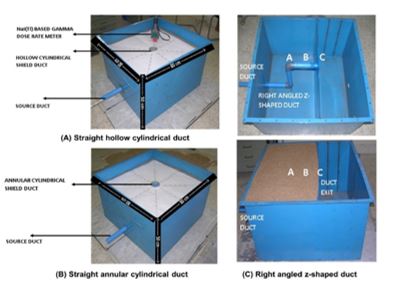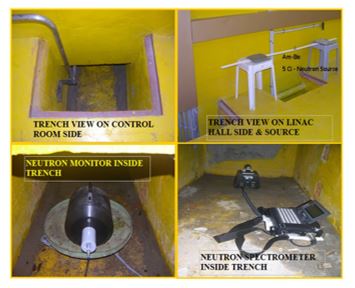Nuclear Safety Studies
During the formative days of SRI, it was envisaged that the country would expand its nuclear programme by deployment of advanced and new generation nuclear power plants in association with integral fuel cycle facilities. To carry out effective regulation of these new systems and facilities, utmost importance was given to develop technical expertise in the areas of reactor physics and radiological safety. In view of this, SRI has aptly selected research topics in the areas related to advanced light water reactors, fast breeder reactors, nuclear fuel cycle and radiological impacts arising from these systems. Recently, a radiation physics laboratory has been setup to start experimental programme for validation of codes and computational methods adopted in radiation transport studies. Going further ahead, a research programme on High Energy Dosimetry in collaboration with the Medical Physics Department of Anna University, Chennai is also initiated. The salient contributions and highlights of the important research works are delineated in the following sections.
A)Reactor Physics Studies
Light Water Reactor Studies
Theoretical analyses of Initial Fuel Loading, First Approach to Criticality, Phase-B low power physics experiments and Phase-C physics experiments at various power levels were carried out for KK VVER-1000 reactors using indigenous deterministic computer code systems. The analyses include the following:
- Loading of fuel assemblies in dry condition and filling of moderator with high boron content approach to first criticality using boron dilution,
- Individual, group wise and integral worth of control protection system absorber rods and also emergency protection system,
- Power distribution, temperature coefficient of reactivity as a function of boron and boric acid coefficient of reactivity etc.
Fuel Cycle Studies
During nuclear power generation, highly radiotoxic by-products such as the minor actinides are formed, which accumulate in spent fuel storage or reprocessing plants on a larger scale. To minimize the long-term radio toxicity risk from these minor actinides, theoretical and experimental studies are undertaken to transmute the long lived minor actinides to short lived or stable species. As for example, the transmutation characteristic of Am-241, one of the major contributors to the radio toxicity in the spent nuclear reactor fuel, was analyzed in both thermal and fast reactor neutron spectra and the superiority of fast neutron spectrum for effective transmutation has been established.
B) Radiological Safety Studies
C) Fast Reactor Studies
The Prototype Fast Breeder Reactor (PFBR) is in advanced stage of construction and expected to attain criticality in near future. PFBR is a 500 MWe sodium cooled, pool type, mixed oxide fuelled reactor. Owing to the significance of this reactor being the first of the kind designed indigenously in the country, SRI has taken keen interest in the evaluation of the reactor physics aspects of PFBR in order to support the regulatory decision making.











